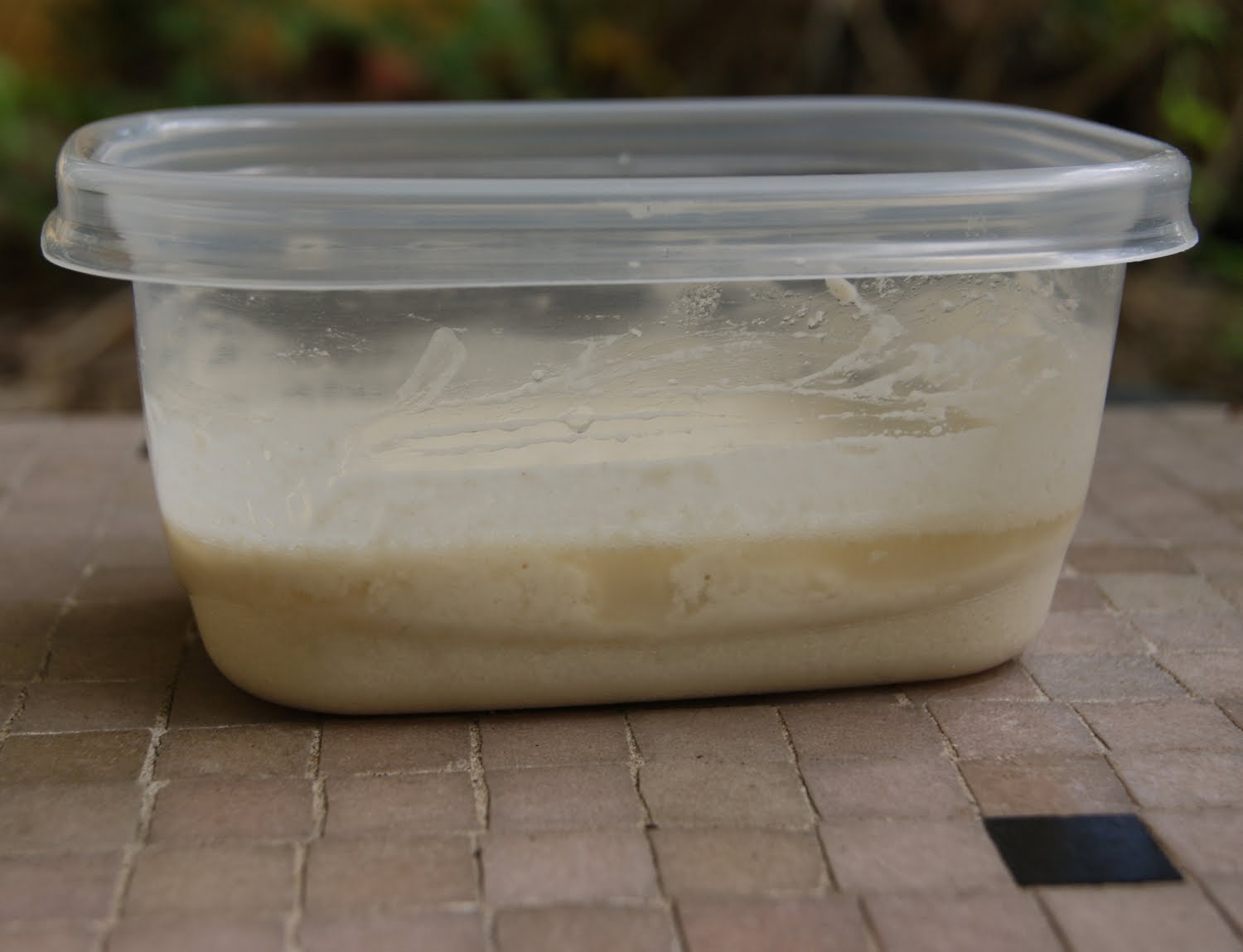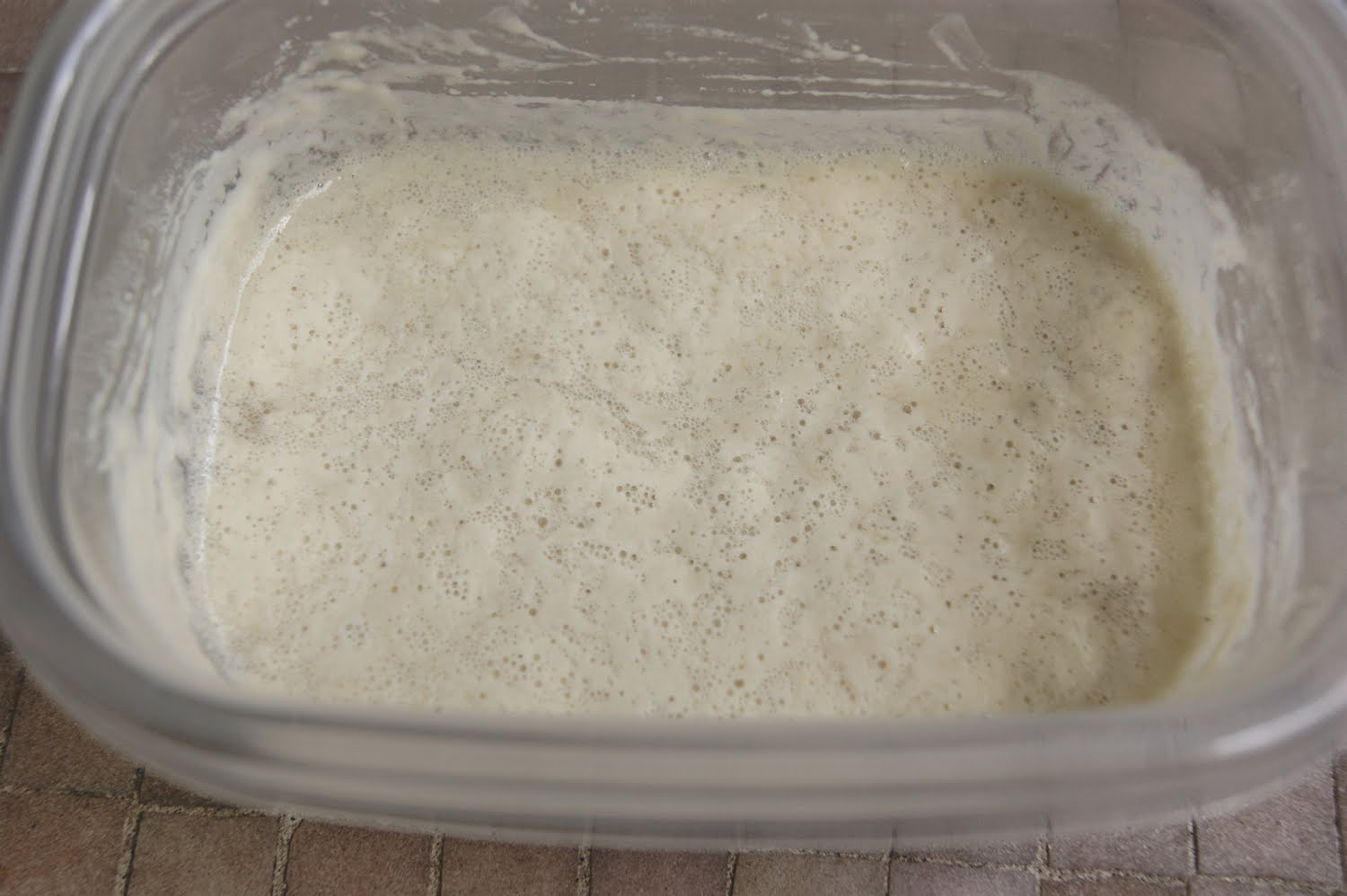Yesterday I began my quest to capture South Miami wild yeast in an effort to create a viable sourdough starter that is truly unique to my neighborhood. The goal: The ultimate in local and sustainable – a bread (or rolls or biscuits, etc.) that could only have been made right here, in my house, in my town. If it works and we enjoy the end product, I can theoretically keep this starter and continue to bake with it for years to come! Cool, huh?
If you’re playing along – and feel free to start anytime that’s convenient for you – or if you’ve done this before, please share your experiences or ask questions in the comments section. That’s where the conversation will take place. And if you’re blogging about your journey with us, let me know and I’ll link to your posts.
I mentioned in yesterday’s post that, after 12-24 hours, some bubbles and/or a layer of clear or brownish liquid could appear on the top of your newborn starter. I began my starter at 8:00 a.m. yesterday, left it in my laundry room (the warmest room in my house), and went to check on it and give it its 12 hour feeding at 8:00 p.m. Sure enough, there was a layer of clear liquid floating on top! I stirred the liquid back into the starter, then stirred in 2 Tbs. of unbleached all purpose flour plus 2 Tbs. of warm water, covered it (leaving a gap for any gases to escape), and left it for the night.
This morning, at the 24 hour mark, it looked like this:
A creamy layer of bubbles had appeared during the night! Below that, was an amber colored layer of liquid. This layer of brownish liquid is commonly called “hooch”. Right now, the mixture smells more acidic than yeasty, but that should change as the “good” yeasts and bacteria edge out any nasties that might have been picked up during the collection process.
Click on the photos to see the process in more detail. I sized them a little larger than usual so the details can be seen more clearly.
 I stirred the mixture again and fed Yeastie his breakfast of 2 Tbs. of flour plus 2 Tbs. of warm water. I felt that the mixture was too thin, so I added another tablespoon of flour. This seemed to bring it back up to the right consistency of thick pancake batter.
I stirred the mixture again and fed Yeastie his breakfast of 2 Tbs. of flour plus 2 Tbs. of warm water. I felt that the mixture was too thin, so I added another tablespoon of flour. This seemed to bring it back up to the right consistency of thick pancake batter.
I realize now that, as the starter increases in volume, it will require more food to sustain it. So, tonight I’ll give it another 3 Tbs. of flour and 2 Tbs. of water. Tomorrow, it may require a full 1/4 cup of flour (4 Tbs.), but we’ll see.
I think I’m off to a good start, though. How’s yours?
Need to catch up? Click here to see how it all began.


Ah yes…I wanted to say that back in the old days when I like to cook and bake a bunch of us at school made a sour dough starter. Soon everyone on the faculty was making sour dough and then it spread to other schools in Buffalo. It was a lot of fun..nice memory….Michelle
You need to check out @SaltySeattle's post today on her sourdough pasta. It looks spectacular!
Carol, I visited Linda's post today, and I agree – it's awesome! Her post references a post by Nicole at Pinch My Salt, which is also pretty great, and to which I will link in my Day 3 post. Thanks!
I think you're right on time. One of the things that you look for are the "bubbles" or the foam on top which is a good thing. Before long you should have a starter that will raise your house! 🙂
Day 2Since I started yesterday afternoon, and since I did not expect too much activity, and since the 12 hour feeding would have been 3am, I skipped it. I also pushed the 24 hour feeding until evening, to get them on a better schedule. At that point I did have some liquid, but that could have just been the flour and water separating. Maybe a few bubbles ….